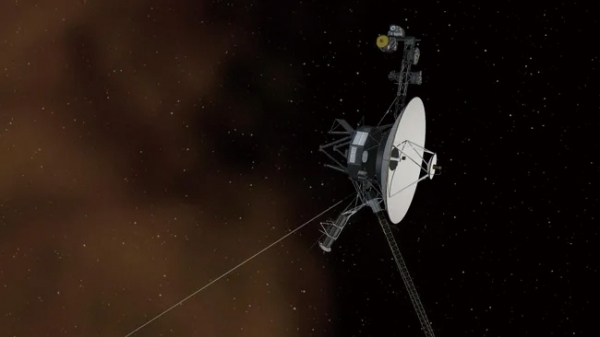
NASA has successfully restored communication with Voyager 1, a spacecraft traveling approximately 24 billion kilometers away from Earth in interstellar space. On Nov. 1 (local time), CNN reported that NASA had managed to reconnect with the spacecraft, which had autonomously shut down and entered a dormant state. This breakthrough, achieved just two weeks after the loss of contact, ensures the continuity of Voyager 1’s remarkable 47-year-long mission.
The issue began on Oct. 18 when NASA sent a command to activate internal heaters on Voyager 1 to protect its components from prolonged exposure to space radiation. The spacecraft, however, unexpectedly switched to emergency mode, shutting down its power systems and entering a dormant state to conserve energy. In this state, Voyager 1 ceased powering its communication system, severing its link with Earth. For NASA engineers, addressing this issue required overcoming significant hurdles, including the 46-hour round-trip delay for signals to travel between Earth and Voyager 1-23 hours each way.
Faced with these challenges, NASA engineers turned to a backup system that had been dormant for decades. To solve the issue, NASA engineers focused on Voyager 1’s dual communication systems. While the spacecraft primarily relies on the high-frequency X-band transmitter for precise data transmission, it is also equipped with a lower-frequency S-band transmitter. The S-band system, last used in 1981, was considered too weak for regular operations. To restore communication, engineers reactivated the long-dormant S-band transmitter. Despite its outdated nature compared to the modern X-band transmitter, the S-band system proved crucial for re-establishing a basic connection. This recovery indicates that Voyager 1 had likely deactivated the X-band transmitter to conserve energy and autonomously transitioned to the less power-intensive S-band system. With this temporary connection now established, NASA is focused on restoring the X-band transmitter, which will allow Voyager 1 to resume transmitting high-quality scientific data in the coming weeks.
Voyager 1, along with its twin spacecraft Voyager 2, was launched in 1977 just weeks apart. Both spacecraft successfully explored the outer planets, including Jupiter and Saturn, before venturing beyond the solar system. Voyager 1 made history in 2012 as the first human-made object to enter interstellar space. Today, it holds the record as both the farthest and longest-operating spacecraft. Continuing its journey into uncharted space, Voyager 1 collects data on cosmic radiation, magnetic fields, and interstellar particles, offering unprecedented insights into regions of space that were previously inaccessible. NASA’s successful reestablishment of communication ensures that this vital scientific data will continue to flow.
The reconnection with Voyager 1 highlights the ingenuity and determination of NASA’s engineers, who continue to tackle the challenges of deep-space exploration. This achievement also underscores the resilience of a spacecraft designed nearly half a century ago, capable of adapting to the harsh conditions of interstellar space. Each faint signal from Voyager 1 is not just data. It is a reminder of humanity’s boldness, a distant beacon of our desire to understand and connect with the universe. This enduring mission inspires future generations to push the boundaries of discovery and dream beyond the stars.


